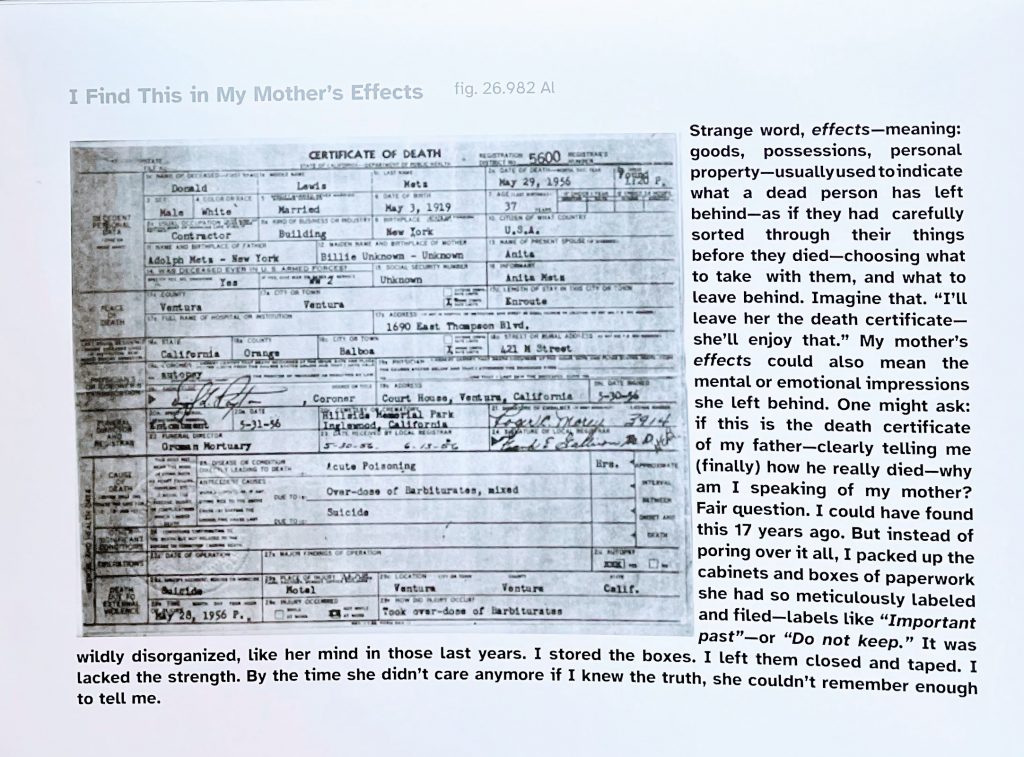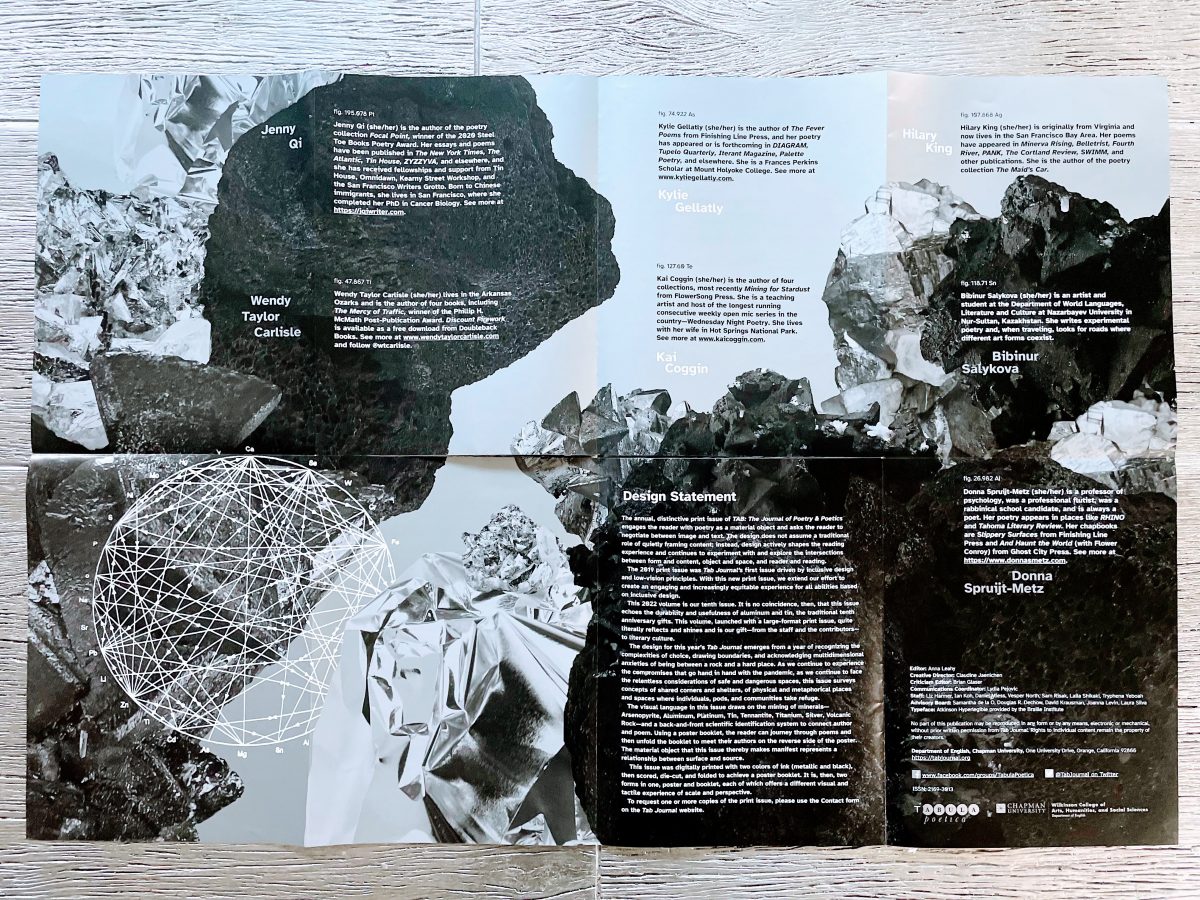Tab Journal has published several visual poems over the last two years. Perhaps because we use design thinking in our approach to poetry, we’re interested in the definitions, practices, and possibilities for poets who are consciously using visual elements to create meaning. Tab Communications Coordinator Lydia Pejovic talked with five visual poets for the March issue: Maria DeGuzmán, Kylie Gellatly, Monica Ong, Donna Spruijt-Metz, and Keith S. Wilson.
Here, she talks in further detail with Donna Spruit-Metz.
Lydia Pejovic: Your work in Volume 10, Issue 1, of Tab Journal juxtaposes documentary material, in this case a death certificate, with poetry. How did you begin working with these visual materials?

Donna Spruijt-Metz: Such a good question. Allison Albino, a dear poet friend of mine, sent me one of her poems that was bouncing off a family snapshot. We send poems to each other all the time for feedback. I loved the poem, how it helped her to talk about things that she hadn’t talked about in her poetry before. At the same time, I was going through boxes and boxes of my mother’s archives. I had been putting that off for decades. I was really having a hard time of it. She suggested I try doing the same thing with some of those materials. And so I embarked on that journey and it really was amazingly painful and fruitful—like writing poetry so often is!
Lydia Pejovic: Your previous career was as a professional flutist. In what ways do you see poetry and music interacting? Can a visual piece be musical?
Donna Spruijt-Metz: Another good question. I think poetry and music ALWAYS interact—or I might say that my favorite poets all have music in their language. I wrote an entire ekphrastic cycle based on J.S. Bach’s St. John Passion—some of them are in the forthcoming book. That was one of my favorite pieces to play. So, in those poems, I was listening to each section again and again, and crafting the work to kind of ‘match’ the section. A direct relationship, thus. But in general, I listen for the music in the lines and in the poems—the meter, the arc—crescendo and decrescendo, tempi, register, even pitch. Yes. I really do think that all plays a part in making a poem stunning, memorable, worthwhile. I have been memorizing Christian Wiman’s poem “Every Riven Thing.” That poem is SO musical—so much music. The lilt in the beginning, the change in meter with the change in subject matter. He’s a genius at it.
Lydia Pejovic: How do you decide, then, which poems should be visual? Your poem “I Find This in My Mother’s Effects,” for example, uses the actual image of the death certificate, possibly functioning as visual evidence of your mother’s effects. Are there specific themes or concepts that work better visually?
Donna Spruijt-Metz: Oh, I don’t think I work in that direction. Or I haven’t yet, but it is a really tempting idea.
Up until now, it has been the shock of seeing a picture or document, and thinking, I have to write about that, but I need the picture to be there for me—or the reader ?—otherwise it won’t work. I can’t say what the picture says. But it is an intriguing idea to be working on a poem and think, I can’t get the ‘aboutness’ right—this needs a picture, or it reminds me of a picture.
Previously in Visual Poetry: Maria DeGuzmán
Also, see the March 2022 issue (Volume 10, Issue 2) for more from all five visual poets who participated in this conversation.
